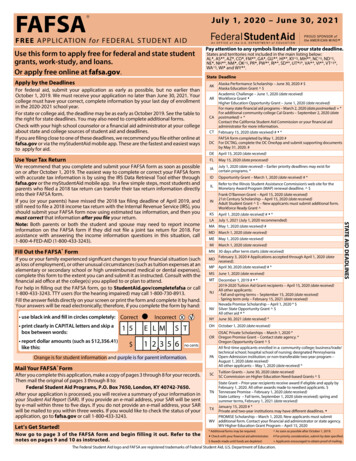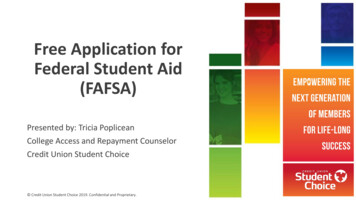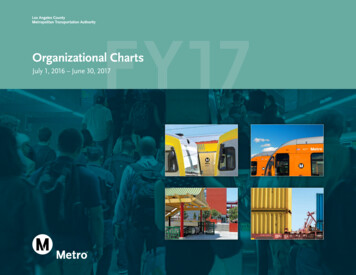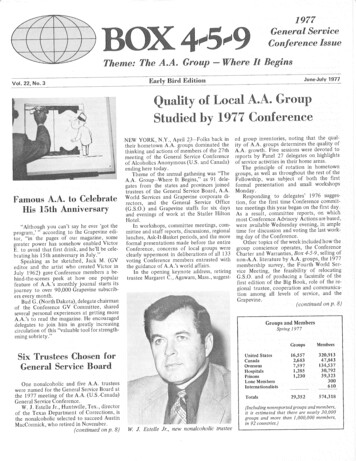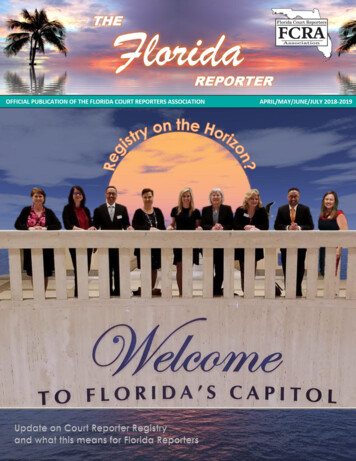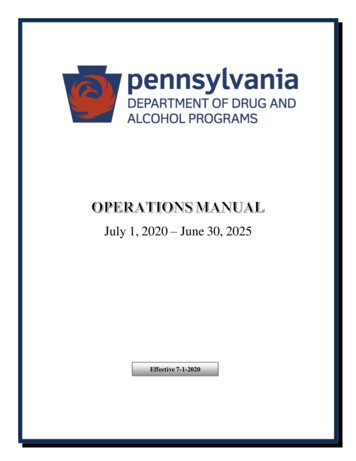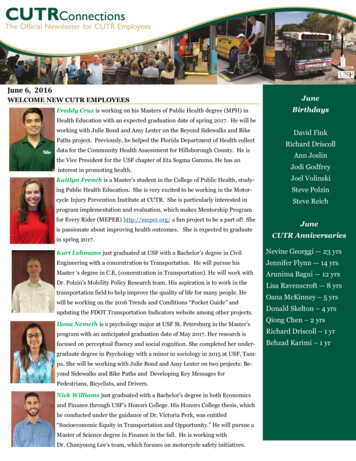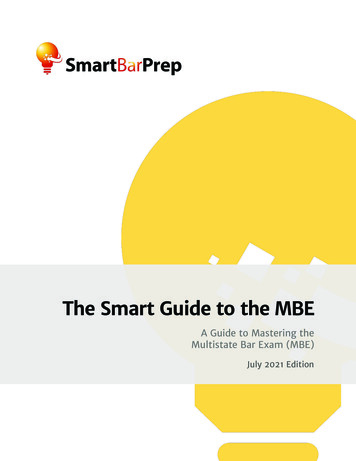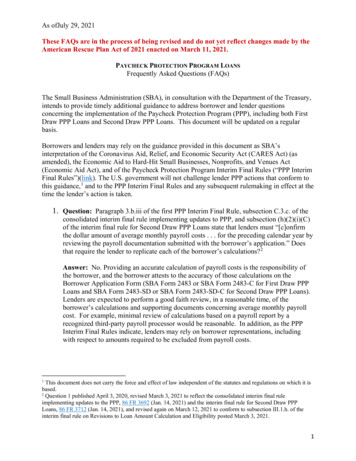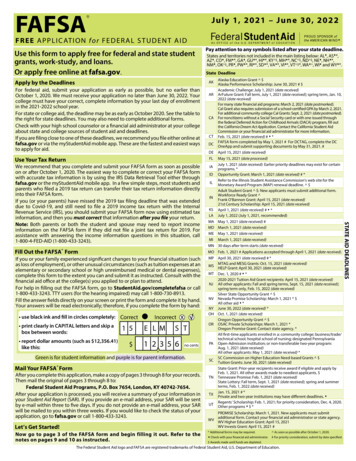
Transcription
FAFSA July 1, 2021 – June 30, 2022F R E E A P P L I C AT I O N f o r F E D E R A L S T U D E N T A I DUse this form to apply free for federal and state studentgrants, work-study, and loans.Or apply free online at fafsa.gov.Apply by the DeadlinesPay attention to any symbols listed after your state deadline.States and territories not included in the main listing below: AL , AS *,AZ , CO , FM *, GA , GU *, HI *, KY , MH *, NC , ND , NE , NH *,NM , OK , PR , PW *, RI *, SD *, VA *, VI *, VT *, WA , WI and WY *.State DeadlineAKFor federal aid, submit your application as early as possible, but no earlier thanOctober 1, 2020. We must receive your application no later than June 30, 2022. Yourcollege must have your correct, complete information by your last day of enrollmentin the 2021-2022 school year.For state or college aid, the deadline may be as early as October 2020. See the table tothe right for state deadlines. You may also need to complete additional forms.Check with your high school counselor or a financial aid administrator at your collegeabout state and college sources of student aid and deadlines.If you are filing close to one of these deadlines, we recommend you file either online atfafsa.gov or via the myStudentAid mobile app. These are the fastest and easiest waysto apply for aid.Use Your Tax ReturnARCACTDCDEAlaska Education Grant Alaska Performance Scholarship: June 30, 2021 # Academic Challenge: July 1, 2021 (date received)ArFuture Grant: Fall term, July 1, 2021 (date received); spring term, Jan. 10,2022 (date received)For many state financial aid programs: March 2, 2021 (date postmarked).Cal Grant also requires submission of a school-certified GPA by March 2, 2021.For additional community college Cal Grants: Sept. 2, 2021 (date postmarked).For noncitizens without a Social Security card or with one issued throughthe federal Deferred Action for Childhood Arrivals (DACA) program, fill outthe California Dream Act Application. Contact the California Student AidCommission or your financial aid administrator for more information.Feb. 15, 2021 (date received) # *FAFSA form completed by May 1, 2021 # For DCTAG, complete the DCOneApp and submit supporting documents by May 31, 2021. #April 15, 2021 (date received)May 15, 2021 (date processed)July 1, 2021 (date received): Earlier priority deadlines may exist for certainIAprograms. *ID Opportunity Grant: March 1, 2021 (date received) # *Refer to the Illinois Student Assistance Commission’s web site for theILMonetary Award Program (MAP) renewal deadline. Adult Student Grant : New applicants must submit additional form.Workforce Ready Grant INFrank O’Bannon Grant: April 15, 2021 (date received)21st Century Scholarship: April 15, 2021 (date received)KS April 1, 2021 (date received) # *LA July 1, 2022 (July 1, 2021, recommended)MA May 1, 2021 (date received) #MD March 1, 2021 (date received)ME May 1, 2021 (date received)MI March 1, 2021 (date received)MN 30 days after term starts (date received)FLFill Out the FAFSA FormMO Feb. 1, 2021 # Applications accepted through April 1, 2021 (date received).If you or your family experienced significant changes to your financial situation (suchas loss of employment), or other unusual circumstances (such as tuition expenses at anelementary or secondary school or high unreimbursed medical or dental expenses),complete this form to the extent you can and submit it as instructed. Consult with thefinancial aid office at the college(s) you applied to or plan to attend.For help in filling out the FAFSA form, go to StudentAid.gov/completefafsa or call1-800-433-3243. TTY users (for the hearing impaired) may call 1-800-730-8913.Fill the answer fields directly on your screen or print the form and complete it by hand.Your answers will be read electronically; therefore, if you complete the form by hand:MP use black ink and fill in circles completely: Correct print clearly in CAPITAL letters and skip abox between words: report dollar amounts (such as 12,356.41)like this:1 5 IncorrectE L MS T1 2 3 5 6,x no centsGreen is for student information and purple is for parent information.MSMTNJNVNYOHORPASC Mail Your FAFSA FormAfter you complete this application, make a copy of pages 3 through 8 for your records.Then mail the original of pages 3 through 8 to:Federal Student Aid Programs, P.O. Box 7654, London, KY 40742-7654.After your application is processed, you will receive a summary of your information inyour Student Aid Report (SAR). If you provide an e-mail address, your SAR will be sentby e-mail within three to five days. If you do not provide an e-mail address, your SARwill be mailed to you within three weeks. If you would like to check the status of yourapplication, go to fafsa.gov or call 1-800-433-3243.Let’s Get Started!Now go to page 3 of the FAFSA form and begin filling it out. Refer to thenotes on pages 9 and 10 as instructed.TNTXUTWVApril 30, 2021 (date received) # *MTAG and MESG Grants: Oct. 15, 2021 (date received)HELP Grant: April 30, 2021 (date received)Dec. 1, 2020 # *2020-2021 Tuition Aid Grant recipients: April 15, 2021 (date received)All other applicants: Fall and spring terms, Sept. 15, 2021 (date received);spring term only, Feb. 15, 2022 (date received)Silver State Opportunity Grant Nevada Promise Scholarship: March 1, 2021 * All other aid *June 30, 2022 (date received) *Oct. 1, 2021 (date received)Oregon Opportunity Grant OSAC Private Scholarships: March 1, 2021 *Oregon Promise Grant: Contact state agency. *All first-time applicants enrolled in a: community college; business/trade/technical school; hospital school of nursing; designated PennsylvaniaOpen-Admission institution; or non-transferable two-year program:Aug. 1, 2021 (date received)All other applicants: May 1, 2021 (date received) *SC Commission on Higher Education Need-based Grants Tuition Grants: June 30, 2021 (date received)State Grant: Prior-year recipients receive award if eligible and apply byFeb. 1, 2021. All other awards made to neediest applicants. Tennessee Promise: Feb. 1, 2021 (date received)State Lottery: Fall term, Sept. 1, 2021 (date received); spring and summerterms, Feb. 1, 2022 (date received)Jan. 15, 2021 # *Private and two-year institutions may have different deadlines. Regents’ Scholarship: Feb. 1, 2021; for priority consideration, Dec. 4, 2020.Other programs *PROMISE Scholarship: March 1, 2021. New applicants must submitadditional form. Contact your financial aid administrator or state agency.WV Higher Education Grant: April 15, 2021WV Invests Grant: April 15, 2021 #* Additional forms may be required. As soon as possible after October 1, 2020. Check with your financial aid administrator.# For priority consideration, submit by date specified. Awards made until funds are depleted.The Federal Student Aid logo and FAFSA are registered trademarks of Federal Student Aid, U.S. Department of Education.STATE AID DEADLINESWe recommend that you complete and submit your FAFSA form as soon as possibleon or after October 1, 2020. The easiest way to complete or correct your FAFSA formwith accurate tax information is by using the IRS Data Retrieval Tool either throughfafsa.gov or the myStudentAid mobile app. In a few simple steps, most students andparents who filed a 2019 tax return can transfer their tax return information directlyinto their FAFSA form.If you (or your parents) have missed the 2019 tax filing deadline that was extendeddue to Covid-19, and still need to file a 2019 income tax return with the InternalRevenue Service (IRS), you should submit your FAFSA form now using estimated taxinformation, and then you must correct that information after you file your return.Note: Both parents or both the student and spouse may need to report incomeinformation on the FAFSA form if they did not file a joint tax return for 2019. Forassistance with answering the income information questions in this situation, call1-800-4-FED-AID (1-800-433-3243).
2021-2022What is the FAFSA form?Why fill out a FAFSA form?The Free Application for Federal Student Aid (FAFSA) is the first step in thefinancial aid process. You use the FAFSA form to apply for federal student aid,such as grants, work-study, and loans. In addition, most states and colleges useinformation from the FAFSA form to award nonfederal aid.Why all the questions?Most of the questions on the FAFSA form are required to calculate your ExpectedFamily Contribution (EFC). The EFC measures your family’s financial strength andis used to determine your eligibility for federal student aid. Your state and thecolleges you list may also use some of your responses. They will determine if youmay be eligible for school or state aid, in addition to federal aid.How do I find out what my Expected Family Contribution (EFC) is?Your EFC will be listed on your Student Aid Report (SAR). Your SAR summarizes theinformation you submitted on your FAFSA form. It is important to review your SARto make sure all of your information is correct and complete. Make corrections orprovide additional information, as necessary.How much student financial aid will I receive?Using the information on your FAFSA form and your EFC, the financial aid officeat your college will determine the amount of aid you will receive. The college willuse your EFC to prepare a financial aid package to help you meet your financialneed. Financial need is the difference between the cost of attendance (which caninclude living expenses), as determined by your college, and your EFC. If you areeligible for a Federal Pell Grant, you may receive it from only one college for thesame period of enrollment. If you or your family have unusual circumstances thatshould be taken into account, contact your college’s financial aid office. Someexamples of unusual circumstances are: unusual medical or dental expenses or alarge change in income from 2019 to this year.When will I receive the student financial aid?Any financial aid you are eligible to receive will be paid to you through yourcollege. Typically, your college will first use the aid to pay tuition, fees and roomand board (if provided by the college). Any remaining aid is paid to you for yourother educational expenses.How can I have more colleges receive my FAFSA form information?If you are completing a paper FAFSA form, you can only list four colleges in theschool code step. You may add more colleges by doing one of the following: After your FAFSA form has been processed, go to fafsa.gov, log in to the site,and follow the instructions for correcting your FAFSA form. Use the Student Aid Report (SAR), which you will receive after your FAFSA formis processed. Your Data Release Number (DRN) verifies your identity and will belisted on the first page of your SAR. You can call 1-800-433-3243 and provideyour DRN to a customer service representative, who will add more schoolcodes for you. Provide your DRN to the financial aid administrator at the college you wantadded, and he or she can add their school code to your FAFSA form.Note: Your FAFSA record can only list up to ten school codes. If there are tenschool codes on your record, each new code will need to replace one of theschool codes listed.Where can I receive more information on student financial aid?The best place for information about student financial aid is the financial aidoffice at the college you plan to attend. The financial aid administrator can tell youabout student aid available from your state, the college itself and other sources. You can also visit our web site StudentAid.gov. For information by phone you can call our Federal Student Aid InformationCenter at 1-800-433-3243. TTY users (for the hearing impaired) may call1-800-730-8913. You can also check with your high school counselor, your state aid agency oryour local library’s reference section.Information about other nonfederal assistance may be available from foundations,faith-based organizations, community organizations and civic groups, as wellas organizations related to your field of interest, such as the American MedicalAssociation or American Bar Association. Check with your parents’ employers orunions to see if they award scholarships or have tuition assistance plans.Page 2FAFSA Privacy Act StatementAuthority: Sections 483 and 484 of the Higher Education Act of 1965, as amended, giveus the authority to ask these questions, and to collect Social Security numbers (SSN), fromboth you and your parents.Purpose: We use the information provided on your Free Application for Federal StudentAid (FAFSA ) form to determine if you are eligible to receive federal student aid and theamount that you are eligible to receive. Your SSN is used to verify your identity and retrieveyour records. We may request your SSN again for these purposes. State and institutionalstudent financial aid programs also may use the information provided on your FAFSA formto determine if you are eligible to receive state and institutional aid and the financial needthat you have for such aid.Routine Uses: The information you provide will not be disclosed outside of the U.S.Department of Education (Department), except with your consent, and as otherwiseallowed by the Privacy Act of 1974, 5 U.S.C. 552a, as amended, pursuant to the routineuses identified in the Federal Student Aid Application File System of Records 9-23581/privacy-act-of-1974-systemof-records. A routine use is a disclosure to a third party without your consent. TheDepartment may disclose your information to third parties under a routine use publishedin the Notice linked to above. Significant routine use disclosures are as follows: Under the published routine uses, we may disclose information to third parties that wehave authorized to assist the Department in administering the federal student financialaid programs. The Department also may send your information to other federal agencies throughcomputer matching programs to verify your eligibility for federal student financialaid, to perform debt collection under the federal loan programs, and to minimizeand prevent waste, fraud, and abuse in the federal student aid programs. Suchcomputer matching programs include matching programs with the Selective ServiceSystem, Social Security Administration, Department of Veterans Affairs, Departmentof Homeland Security, Department of Justice, the Department of Defense, and theDepartment of Housing and Urban Development. More information on sharingwith other federal agencies pursuant to a computer matching agreement can befound on the Department of Education’s Computer Matching Agreements ml. The Department will send your information to the state higher education agency inyour state of legal residence. This disclosure will allow you to apply for state studentfinancial aid without necessarily having to submit an additional application form. Yourapplication information also will be sent to the college(s) listed on your FAFSA form,or its representative, and to the state higher education agencies in the states of thecolleges listed. Additional information on state higher education agencies can be foundat www2.ed.gov/about/contacts/state/index.html The Department may also disclose information to your parents or spouse and tomembers of Congress if you ask them to help you with student aid questions. If thefederal government, the U.S. Department of Education, or an employee of the U.S.Department of Education is involved in litigation, we may send information to theDepartment of Justice, or a court or adjudicative body, if the disclosure is related tofinancial aid and certain conditions are met. In addition, we may send your informationto a foreign, federal, state, or local enforcement agency if the information that yousubmitted indicates a violation or potential violation of law, for which that agency hasjurisdiction for investigation or prosecution. We may send information to the Officeof Management and Budget or the Congressional Budget Service to fulfill Fair CreditReporting Act requirements. Finally, we may disclose records in the course of respondingto a breach of data to appropriate agencies, entities, and persons. The Department may disclose information to a federal or state agency or a fiscal orfinancial agency designated by the U.S. Department of the Treasury for the purposes ofidentifying, preventing, or recouping an improper payment. We may send information regarding a claim that is determined to be valid and overdueto a consumer reporting agency. This information includes identifiers from the record;the amount, status and history of the claim; and the program under which the claimarose.Effects of Not Providing Information: Providing information, including your SSN, isvoluntary; however, if you do not give us all the information we need to process your FAFSAform, your aid may be delayed or denied. If you are applying solely for federal aid, youmust answer all of the following questions that apply to you and are requested: 1–9, 14–16,18, 21–23, 26, 28–29, 32–58, 60–67, 72–100, 102, and 103. If you want to apply for statefinancial aid, you must answer all the relevant questions.State Certification: By submitting this application, you are giving your state financialaid agency permission to verify any statement on this form and to obtain income taxinformation for all persons required to report income on this form.The Paperwork Reduction Act of 1995: According to the Paperwork Reduction Actof 1995, no persons are required to respond to a collection of information unless suchcollection displays a valid OMB control number. The valid OMB control number forthis information collection is 1845-0001. Public reporting burden for this collection ofinformation is estimated to average one and a half hours per response, including time forreviewing instructions, searching existing data sources, gathering and maintaining thedata needed, and completing and reviewing the collection of information. The obligationto respond to this collection is voluntary. If you have comments or concerns regarding thestatus of your individual submission of this form, please contact the Federal Student AidInformation Center, P.O. Box 84, Washington, D.C. 20044 directly. (Note: Please do not returnthe completed form to this address.)We may request additional information from you to process your application moreefficiently. We will collect this additional information only as needed and on a voluntarybasis.
2021-2022FAFSA July 1, 2021 – June 30, 2022F R E E A P P L I C AT I O N f o r F E D E R A L S T U D E N T A I DStep One (Student): For questions 1-31, leave any questions that do not apply to you (the student) blank.OMB # 1845-0001Your full name (exactly as it appears on your Social Security card) If your name has a suffix, such as Jr. or III, include a space between your last name and suffix.1. Lastname2. Firstname3. MiddleinitialYour permanent mailing address4. Number and street(include apt. number)5. City (and country ifnot U.S.)6. State8. Your Social Security Number See Notes page 9.––9. Your dateof birthMONTHDAY7. ZIP code10. Your telephone numberYEAR(Your driver’s license number and driver’s license state (if you have one)11. Driver’s licensenumber)–12. Driver’s licensestate13. Your e-mail address. If you provide your e-mail address, we will communicate with you electronically. For example, when your FAFSA form has been processed, youwill be notified by e-mail. Your e-mail address will also be shared with your state and the colleges listed on your FAFSA form to allow them to communicate with you. Ifyou do not have an e-mail address, leave this field blank.14. Are you a U.S.citizen?Mark only one.See Notes page 9.16. What is yourmarital status asof today?Yes, I am a U.S. citizen (U.S. national). Skip to question 16. . . . . . .1No, but I am an eligible noncitizen. Fill in q
or the myStudentAid mobile app. In a few simple steps, most students and parents who filed a 2019 tax return can transfer their tax return information directly into their FAFSA form. If you (or your parents) have missed the 2019 tax filing deadline that was extended due to Covid-19, and stil

